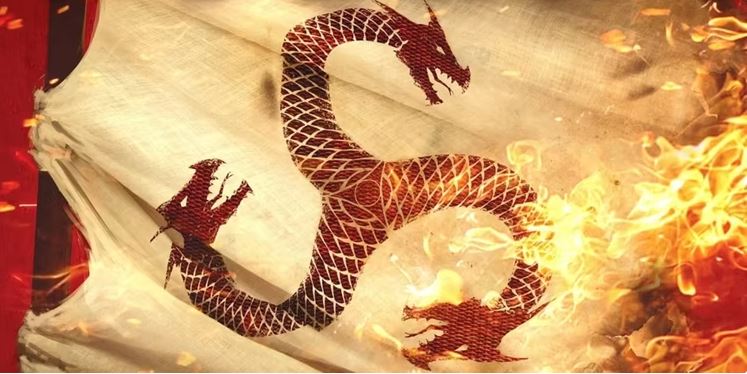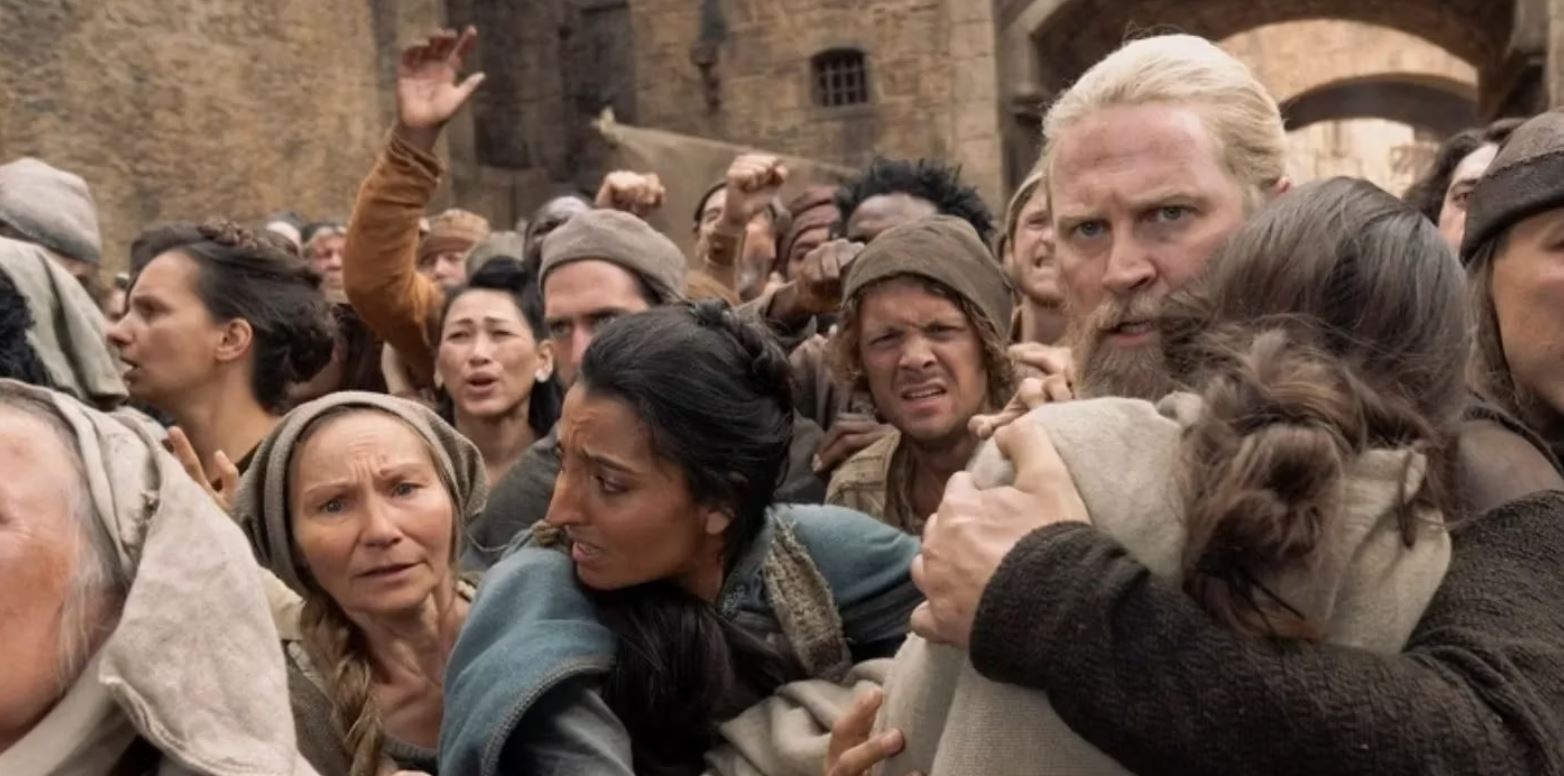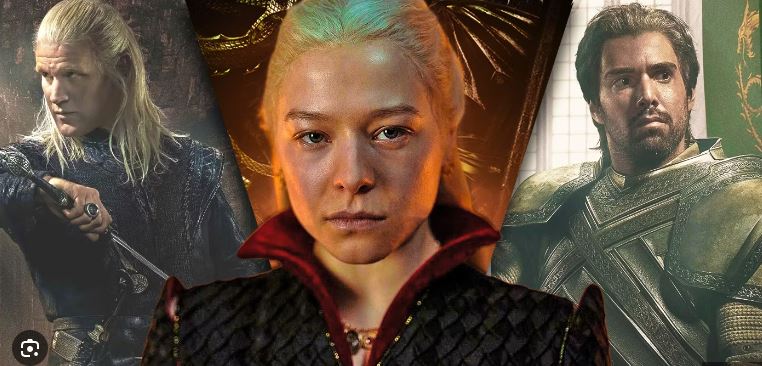House of the Dragon is the first major Game of Thrones spin-off, and the show became an instant success. After the events of Season 2 push Rhaenyra Targaryen’s Blacks further against King Aegon’s Greens, the Dance of the Dragons reaches a boiling point. Yet, despite having not been fully depicted on-screen, the events of the story have already been told. The show is based on George R. R. Martin’s Fire & Blood, which was released on November 20, 2018.
The Dance of the Dragons is turning into a bloody and painful affair, and the only way to truly avoid spoilers is to delve into its pages. It tells the entire story of the Dance while offering a few different branching paths that the show may take advantage of. Of course, the entire story is not devoted to the Dance of the Dragons, which is why it may be best to focus on the few key chapters that inspired House of the Dragon Season 1.
Updated on August 19, 2024, by Arthur Goyaz: House of the Dragon expands on Fire & Blood’s historical accounting of the Targaryen dynasty in seasons 1 and 2, but there’s still a lot of ground to cover in the two remaining seasons. This article was updated to include more information about the show’s source material.
What is George R. R. Martin’s Fire & Blood About?

Fire & Blood is a book that tells the in-universe history of the Targaryen dynasty’s rise and fall. Much of the story is already featured in Martin’s The World of Ice & Fire, which was also partly written by Elio Garcia and Linda Antonsson. While intended to be a complete depiction of Targaryen rule, Martin could not contain their entire story within the pages of Fire & Blood. Martin is still working on writing Blood & Fire, the second volume, which will complete the House Targaryen timeline with the fall of King Aerys II Targaryen, the Mad King.
While intended for real-world audiences, the book itself is simultaneously an in-universe text, written by Archmaester Gyldayn. In Westeros, the book is known as Fire & Blood, Being a History of the Targaryen Kings of Westeros. Gyldayn dedicated himself to writing the entire history of the Targaryen family’s time as Westeros’ rulers. The book features multiple explanations for every event, as it is meant to reflect how a Westerosi history book would be structured.
Fire & Blood features primary and secondary evidence, and it also includes considerable bias on Gyldayn’s part. Anyone reading the book should look for signs of Gyldayn’s bias, which especially influences his depiction of Alicent and Rhaenyra. Long story short, historical facts from Westeros get mixed up in a web of gossip, which makes the book’s account of the Targaryen dynasty all the more exciting. It starts with Aegon, the Conqueror, taking over Westeros and ends with the rise of Aegon III to the throne. In between these two kings, a good portion of Fire & Blood is devoted to the civil war that almost destroyed House Targaryen.
The Fire & Blood Chapters That Inspired House of the Dragon Season 1

House of the Dragon is not a perfect adaptation of Fire & Blood, which makes it difficult to translate elements of the story properly from the book to the live-action depiction. The show changes many characters to make a more compelling narrative. Alicent Hightower being Rhaenyra’s age is one serious deviation from the books that helps to make a stronger bond between the two — in the book, Alicent was old enough to read stories at the bedside of King Jaehaerys. The changes add a painful emotional piece to their later conflict, but it’s completely divorced from Martin’s book. Still, the seeds of House of the Dragon Season 1 can be found in two chapters that come at the midpoint of Fire & Blood.
The chapters “Heirs of the Dragon – A Question of Succession,” “The Dying of the Dragons – The Blacks and the Greens,” and “The Dying of the Dragons – A Son for a Son” inspired House of the Dragon Season 1. The chapters featured the Old King Jaehaerys calling the Great Council of 101, which led to Viserys being chosen as the heir over Rhaenys, the Queen Who Never Was. The coming years saw Viserys proclaim Rhaenyra as his heir, while still bearing several children with Alicent. The final inspiration came from “A Son for a Son,” which features Aemond killing Lucerys Velaryon in cold blood.
“A Son for a Son” does feature more than just Lucerys’ death, as those events occur early in the chapter. Anyone hoping to read just the events of Season 1 should not finish the entire chapter. Those who continue to read will be treading in Season 2 territory, stumbling upon one of the darkest events of both Fire & Blood and House of the Dragon.
Additionally, large swaths of Fire & Blood were taken from novellas released before the book. The Princess and the Queen and The Rogue Prince each became fleshed-out elements of the book. The Princess and the Queen, which was also titled The Blacks and the Greens, depicts the aftermath of Viserys’ death and Alicent’s support for Aegon usurping the thro
ne. The novella eventually inspired the title of House of the Dragon Season 1, episode 6. The Rogue Prince, meanwhile, depicts the rise of the Black and Green factions before Viserys’ death. While released after The Princess and the Queen, The Rogue Prince is set before it in Westeros’ chronology. Both novellas were significant inspirations for House of the Dragon.
Which Other Chapters Will House of the Dragon Adapt?

The Dance of the Dragons will come to an end in Season 4, but House of the Dragon still has a lot of ground to cover. Season 2 kicks off with the conclusion of “A Son for a Son,” featuring the chilling Blood and Cheese attack, the most ruthless revenge killing in Fire & Blood. House of the Dragon goes as far as to adapt the nearly comical fight between Erryk and Arryk, the twin brothers of different allegiances, but suddenly takes a halt when it reaches “The Dying of the Dragons – The Red Dragon and the Gold,” devoting at least two episodes solely to Daemon’s hallucinations arc in Harrenhal and Aemond’s greedy schemes taking shape.
While Season 1 covered material from three Fire & Blood chapters, House of the Dragon Season 2 adapted 1.5 chapters of the book. It does a great job at bringing epic moments of the book to the screen, such as the bloody Red and Gold dragon fight and the “The Sowing of the Seeds,” featuring Rhaenyra’s successful attempt to find new dragonriders. House of the Dragon chooses to remain in the initial stages of the war, ending right before the book’s first big, bloody battle, “The Battle of the Gullet,” setting the path for an explosive Season 3.
The final two House of the Dragon seasons will need to include the remaining events of “The Dying of the Dragons – The Red Dragon and the Gold,” “The Dying of the Dragons – Rhaenyra Triumphant,” “The Dying of the Dragons – Rhaenyra Overthrown,” “The Dying of the Dragons – The Short, Sad Reign of Aegon II,” and “Aftermath – The Hour of the Wolf.” This final chapter arguably offers the best possible ending to House of the Dragon, concluding the story on a high note. Should HBO choose to, the show could continue to depict other arcs, including the “Under the Regents” saga and “The Lysene Spring and the End of Regency,” although these chapters lack the Dance of the Dragon’s momentum. However, that doesn’t mean Fire & Blood doesn’t have other chapters worthy of their own spinoff.
Are There Other Fire & Blood Chapters Worthy of a New Spinoff?

Earlier in 2024, a spinoff centered around Aegon’s conquest of Westeros was announced, meaning that more material from Fire & Blood will be coming to the screen. The news doesn’t come as a surprise: with the unparalleled success of Game of Thrones, the rise of other medieval shows such as The Wheel of Time, The Witcher, and The Lord of the Rings: The Rings of Power saw other studios trying hard to replicate the formula of the hit show. HBO, however, understood that “replicate” was the right word, bringing fans back to Westeros with the equally superb House of the Dragon. It didn’t take long before more Game of Thrones spinoffs went into development.
However, what makes the spinoff on Aegon’s conquest so exciting is the chance to witness the most explosive moments of Fire & Blood on TV. While the chapters that give origin to House of the Dragon are filled with political intrigue and dragon fights, the first chapters of the book cover a bloody, unforgiving war that sweeps the entire continent of Westeros. The chapters “Aegon’s Conquest” and “Reign of the Dragon—The Wars of King Aegon I” deliver unprecedented battles, truly setting the “fire and blood” promise into motion. It follows in detail Aegon’s journey to become king alongside Balerion, the biggest and most terrifying Targaryen dragon, as he takes down his enemies one by one and creates the iconic Iron Throne.
It doesn’t stop there. News of an Aegon I spinoff guarantees that all the most exciting battles of Fire & Blood will be adapted, but there are other chapters worthy of spinoffs of their own. “The Sons of the Dragon” has Game of Thrones-worthy political tension as it depicts the rise of Maegor, the Cruel, the tyrant who usurped his own family’s right of succession to rule in their place. Although both Game of Thrones and House of the Dragon are known for their grisly depictions of violence, Maegor’s unsettling crimes might be too much even for HBO to handle. However, the narrative is great and full of twists, further proving that there’s more to Fire & Blood than just the memorable Dance of the Dragons.
